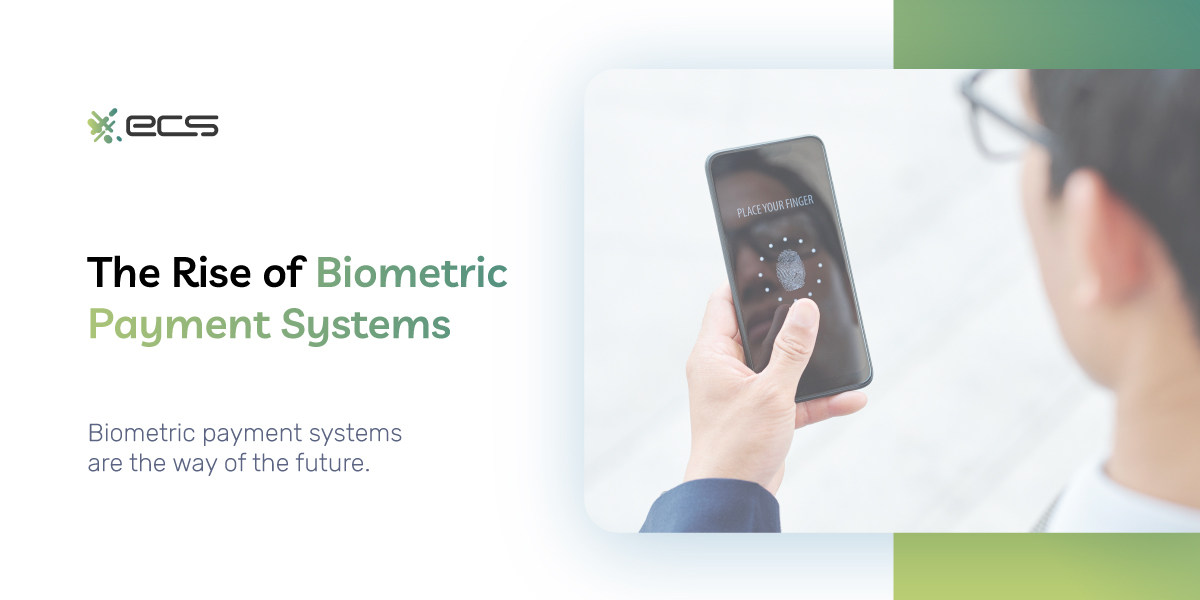Once upon a time, the idea of a security system requiring placing your hand on a screen to open a secure doorway seemed exclusive to James Bond or Star Trek. Today, millions of consumers around the world use biometric payment systems. They access their mobile phone’s home screen with a facial scan or open applications with a thumbprint. My, how the times have changed.
Mastercard’s Biometric Brazilian Rollout
In 2022, Mastercard experimented with biometric payments at five St. Marche convenience stores in Sao Paulo in partnership with Brazilian financial technology (fintech) startup Payface. As a sign of success for the pilot, Mastercard cited that 74% of polled global consumers feel optimistic about biometric payments, 60% would feel safer using something like a thumbprint instead of a PIN for secure transactions, and 93% would feel comfortable using an “emergent” payment technology.
Reception of facial technology was positive. More than 1,000 consumers enrolled in the program, 3x what Mastercard had been expecting. They made six transactions over the course of the three-month trial period. A survey of 100 such customers found that 90% were comfortable with their experience, and 76% would even recommend the idea to a friend.
Part of the reason Mastercard rolled out the technology in this particular area was that the Ibirapuera Park near these stores is a haven for joggers. They wanted to see how consumers would respond to the idea of leaving their wallets at home while exercising and using their faces to make a payment if they needed a bottle of water or a snack post-workout.
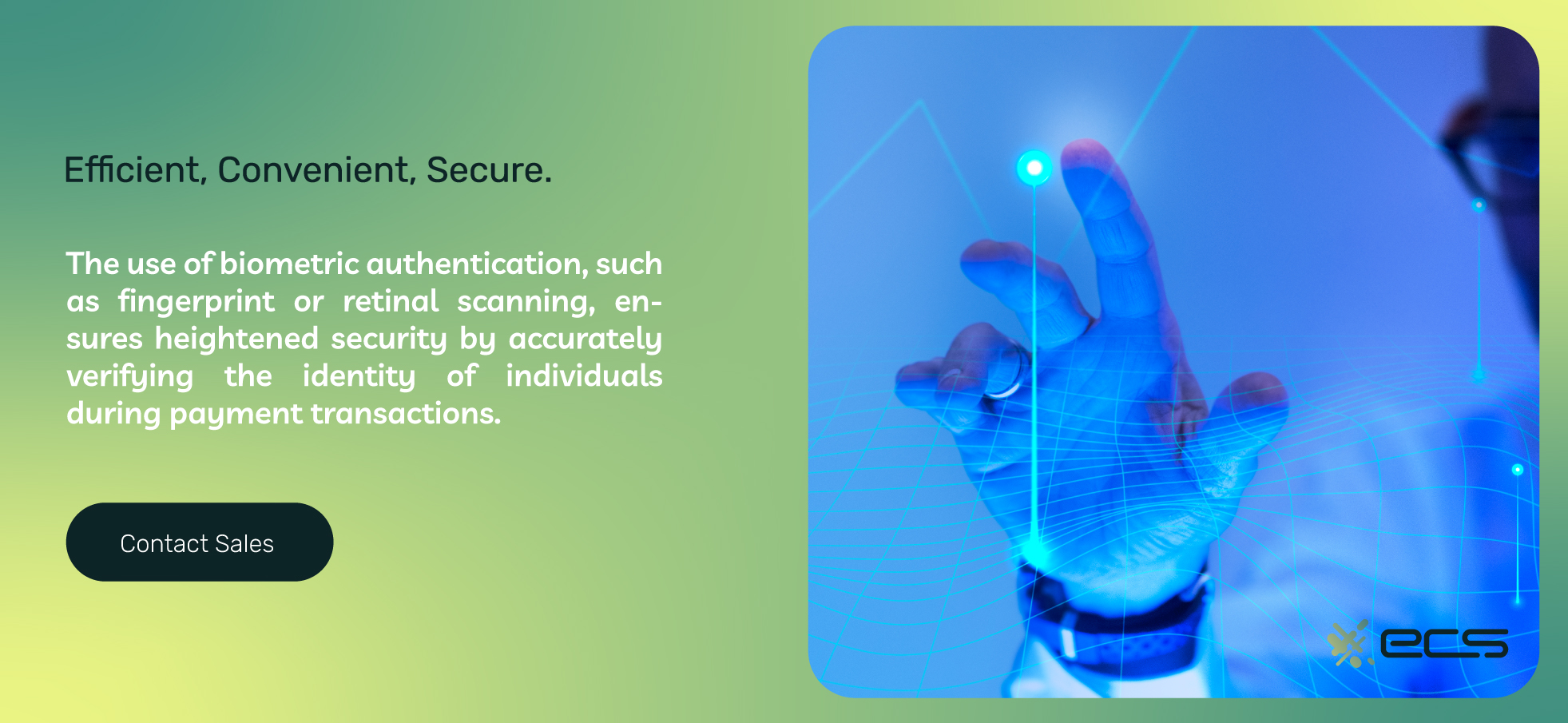
Start Your Engines
JP Morgan followed in Mastercard’s footsteps by rolling out a pilot of biometric payments in the United States. One of their first venues for experimenting with this technology was the Formula 1 Grand Prix in Miami, Florida.
“Want a shorter line at the beer counter? Just bring your face,” industry publication TheDrive jested in reviewing the rollout. The idea was that racing fans could pre-register facial scans or handprints and then use these methods to authenticate concession purchases during the race.
Selecting a Formula 1 Grand Prix as a testing ground may seem somewhat arbitrary. However, sports and entertainment venues have already been a venue for cutting-edge payment technology.
Since 2014, RFID bracelets (radio frequency identification) have been handed out to festival-goers to accelerate concession purchases with contactless payment. Attendees pre-load money “onto” the bracelet and then use it to pay for food, drinks, and merch, eliminating the need to take out cash or even credit cards.
Biometric payments would take this one step further, eliminating the need for even the simple, wearable payment-tech of a bracelet. Large entertainment-related gatherings are a natural venue for this type of tech because long concession lines can hamper the experience and create foot traffic congestion.
Amazon One, Whole Foods, and Airports
Biometric payment systems are making their way to venues partnering with Amazon, includingWhole Foods subsidiaries. Amazon One, Amazon’s palm recognition service, is already used at 400 businesses and has 3 million participants. Now, these shoppers can use hand recognition for payment transactions at all 500 Whole Foods stores nationwide.
Whole Foods is not the only retailer adopting the biometric identification payment processor. Select Panera locations and Coors Field (home of the Colorado Rockies) also use Amazon One payment terminals.
The process of enrolling in Amazon One takes about a minute for consumers. They can link up their Amazon account, along with their preferred payment method (credit and debit cards). Their biometric information will also be linked to their Amazon accounts, which will help them access savings and Prime benefits while shopping in person.
Airport retailers have recognized the value of this payment innovation. Retailers like Hudson News, CREWS, and OHM have deployed this biometric technology in airports nationwide, from Atlanta to Dallas to Los Angeles. Flustered travelers in need of an overpriced water bottle and a pillow that contours to their neck can now just wave their hand and hurry on to their boarding gate.
Are Biometric Payments Secure?
Some consumers have justifiable concerns about facial recognition payments. They may wonder if their stored biometric data is secure. A student event at USC (University of Southern California) drew some ire from attendees who had no choice but to pay for concessions with biometric verification.
Consumers may find something invasive about facial or iris scanning as a retail payment solution. Even individuals with underdeveloped EQ are aware that facial expressions betray our innermost feelings. The idea of having your face scanned in the name of payment efficiency may feel uncomfortable, almost as if “the business” you’re shopping at is probing into your inner world.
Perhaps this is why companies like Amazon have gravitated toward biometric authentication methods like hand and fingerprint payments. Waving your hand over a terminal rather than bearing the “windows to the soul” (e.g., the eyes, as Shakespeare referred to them) may be more comfortable for the average consumer.
Abuse of Biometric Systems: A Danger?
Consumer discomfort is tied to worries about digital identities being appropriated by thieves or abused by law enforcement. Indeed, these concerns are somewhat valid. Organizations like the ACLU have been blowing the proverbial whistle about 50% of American adults being stored in a national “facial” police database and that the FBI has access to 640 million photos of Americans—leading some Facebook users to deeply regret that Halloween costume last year.
Can biometric data be appropriated outside the context of financial institutions? At this time, it seems unlikely. Like credit card numbers, customer biometric information is rigorously guarded in the data cloud through encryption. Amazon is not storing a neat catalog of handprints that can be subject to a data breach. Instead, it garbles these handprint maps into numbers that only the parties involved in the transaction (e.g., Amazon) can decode.
However, recent events have shown us that, on occasion, financial institutions are willing to partner with governments to punish customers along ideological lines. Canadian Protesters’ bank accounts were frozen during the Trucker Convoy. If consumers live in a world where everything is paid for with fingerprint scanners, could “the authorities” prevent them from gaining access to goods and services they need?
Such dystopian conjectures are beyond the scope of our survey, but are worthy of consideration. Amazon has already gotten itself embroiled in consumer privacy concerns when it was discovered that Alexa devices are listening to your conversations at home. However, Amazon tries to spin it as something “positive” for improving consumer experience.
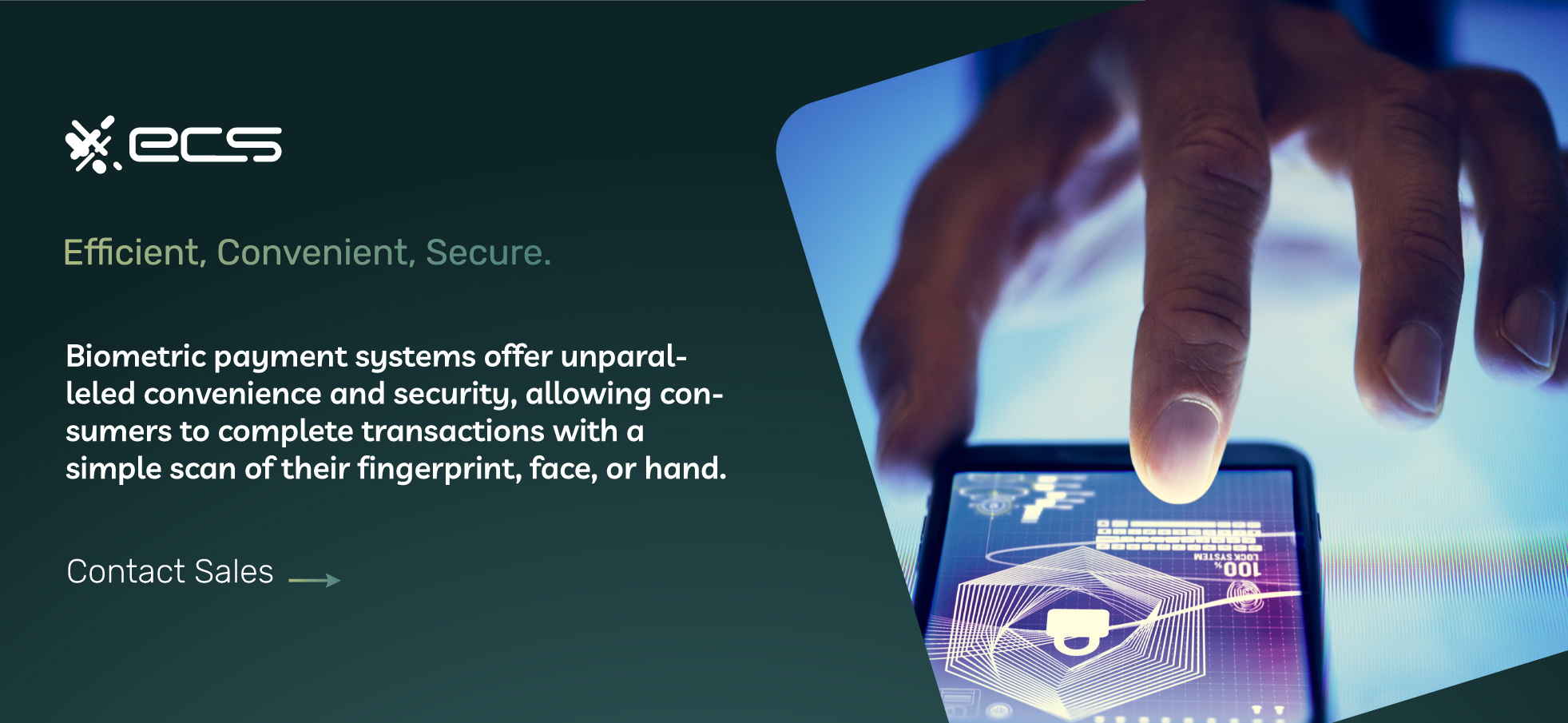
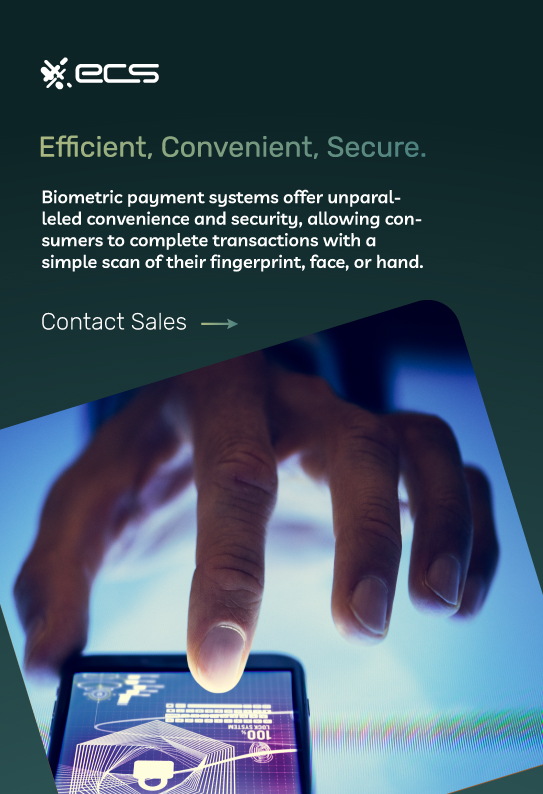
Consumer Demand For Convenience: A Driving Factor
What’s driving the rising trend in biometric verification? Like anything else in a free market economy, a big part of it is consumer preference. Attention spans have seemed to shrink over the years, perhaps accelerated by the rise of social media and its bite-sized presentation of life.
Around 60% of consumers get frustrated waiting in line, some of them enough to leave a store. Recent tech innovations combined with consumer impatience fuels trends in curbside pickup and self-checkout—in fact, by 2030, more than $4 billion will be spent on self-checkout transactions globally.
Contactless payments have made things a little easier for consumers in this regard. The old magnetic swipe payment method could take 10-15 seconds, as do EMV chip insertions. Contactless taps are often completed in 1-2 seconds, but they still require taking out your wallet or opening your mobile wallet.
Biometric payments would be the ultimate in terms of easy, quick transactions. Fingerprint or retinal scanning would be a seamless checkout process where customers don’t need to take anything out of their pocket or purse. The transactions would be quick and painless and facilitate rapidly moving lines.
How Do Biometric Payments Work
There are several different solutions for measuring biometric data, but in general, the identification process does not use “flat photographs.” Rather, scanning technology surveys the surface of a face or the ridges of a fingerprint, gaining a three-dimensional understanding of the subject. Technology like the Amazon hand scanner can even map out the veins underneath the hand for user authentication.
This means that a criminal could not use a photograph of a fingerprint or a face to “fool” the payment technology. The cameras actually gauge the presence of a fully dimensional object (e.g., the hand or the contours of a face) in a way almost comparable to a submarine using SONAR to bounce signals off the ocean floor to map its contours.
But, how does the payment processor get a hold of your fingerprint or mugshot to begin with? Consumers need to pre-register their identifying features (hand, face, iris) with the payment provider first. Whether it’s Amazon or Mastercard, they need to register their biometric information with that company, which will store the data to verify it against the scan at the time of a transaction.
Could voice biometrics be used for payments? Most certainly. This particular type of verification would be difficult to implement in noisy places like a retailer or a restaurant. Voice authentication for payments is a solution that could be used for phone or online payments. Some banks, like Wells Fargo, have already started using voice authentication to help consumers access their banking info over the phone without the help of a teller.
Microchips, Anyone?
Another aspect of “biometric” payments is implanted chips. Consumers who always forget their wallets at home will be elated to know they can now have payment chips implanted into their hands for just a few hundred dollars.
But, in light of the rapid advent of cloud-based biometric databases (e.g., your face or fingerprint registered with a card network or the likes of Amazon), microchipping seems unlikely to take off. If you can pay with a smile, why undergo a (mildly) invasive procedure?
On the other hand, microchipping may take off if it is combined with various functionalities, such as digital passports or the transhuman Neuralink chip. There seems to be an increasingly actualized possibility that everything you can do on your phone (check your email, browse your bank statements, play Candy Crush) you might soon be able to do in your brain. Would that include making payments?
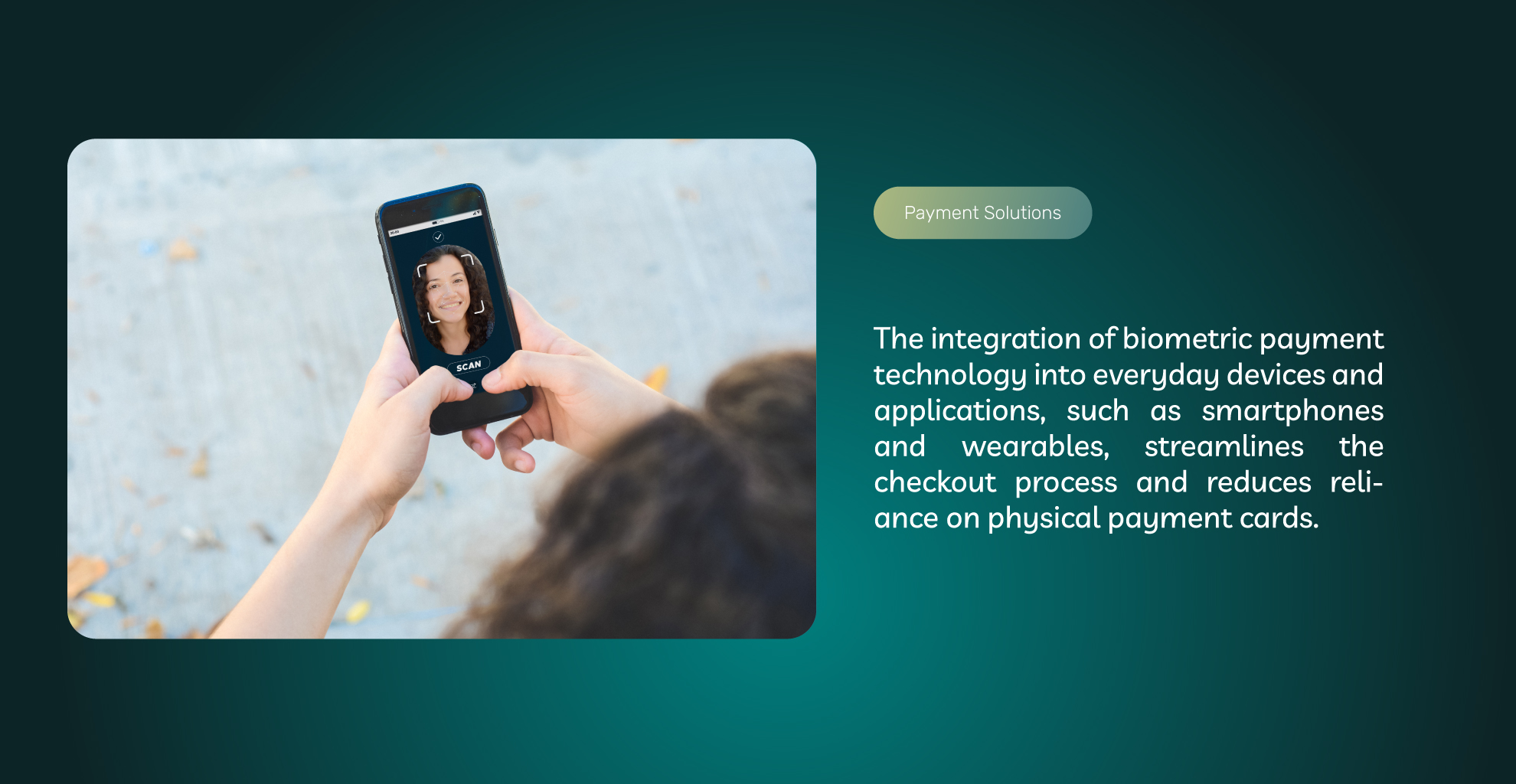
Mobile Wallet Applications and Biometric Cards
Until these futuristic ideas become more mainstream, the largest use of biometric identifiers to access mobile apps like a digital wallet will be AppleID, which will request thumbprint or facial scans for you to access ApplePay, for instance.
Consumers using their mobile devices to make an online or in-store payment must verify their biometric data to access their “digital wallet.” This is a way to secure payment processing and prevent stolen phones from being used to make payments.
Card companies have appropriated this idea for plastic cards, creating cards requiring a thumbprint to “unlock.” The Mastercard biometric card is one such example of a plastic payment method. At the time of payment, the thumbprint of the customer holding the card is matched against a digital image stored within the card.
Will Merchants Have to Pay To Embrace Biometric Payments?
Card networks, banks, and payment processors have a vested interest in pushing biometric payments because they are arguably the most secure payment form ever invented. It’s not necessarily a new invention, as thumbprints were used to sign contracts in clay thousands of years ago in Mesopotamia.
But it’s a relatively new technology compared to the current payment landscape of tendering plastic cards and verifying them with a PIN (or not at all, in the case of contactless payments).
Nobody can replicate your thumbprint, or the contours of your face. Moreover (as mentioned), the scanning technology can tell if the thumb or face in front of it is real or photographic by mapping out its three-dimensional depth.
Financial institutions will invest in this type of payment technology because it will significantly reduce (perhaps eliminate) fraud and theft. As such, securing biometric POS technology will likely not be something businesses must pay for. Instead, their expense will be wrapped up in the already extant landscape of renting or leasing POS terminals.
To learn more about the exciting developments in biometric payments, the future of payment systems, and how you might use them for your business, give us a call or use our contact form. We look forward to working with you!
Frequently Asked Questions About Biometric Payment Systems
Biometric payment systems are convenient, quick, secure, and reliable. With biometric payments, customers don’t need to take out their wallets, cards, or even mobile devices.
Biometric payments use human biology to approve purchases. Consumers can use facial recognition, fingerprint scanning, iris scanning, hand recognition, and voice for biometric payments.
Technology scans the surface of a customer’s face, the ridges of a fingerprint, or the unique characteristics of their iris to obtain a three-dimensional understanding of the subject. The payment processor then verifies the scan against the consumer’s pre-registered biometric information.
Various factors are contributing to the rise in biometric transaction technology. These include an increase in consumer preference for quick and easy transactions, impatience with waiting in line, and the need not to carry purses or wallets.
Biometric payments may sound like an ingenious future. However, there are privacy concerns, a potential for abuse by law enforcement and other powerful entities, and, of course, the Book of Revelations’ warning of microchipping.
